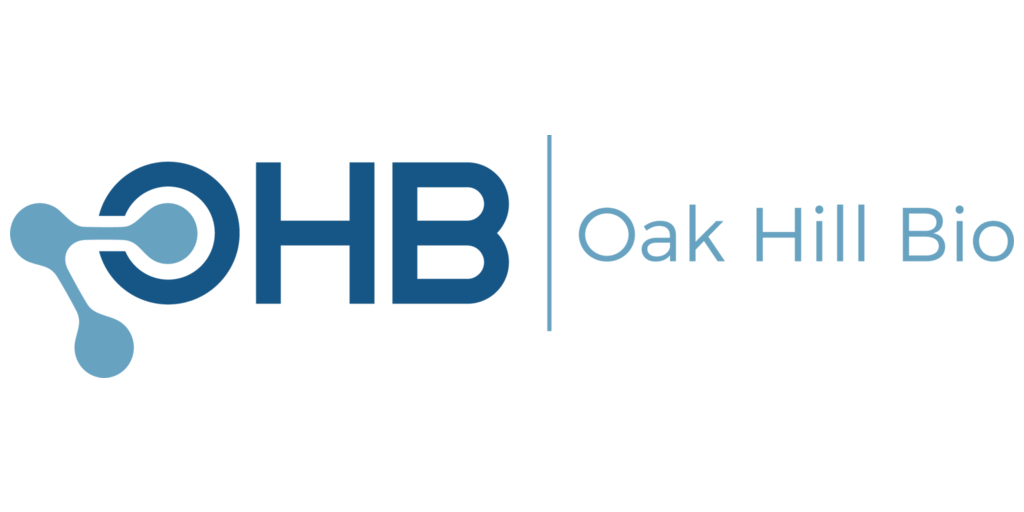- Multi-center study re-launched in May is based on previous Phase 2a clinical data,1 which showed a decrease in the occurrence of severe bronchopulmonary dysplasia (BPD).
- OHB-607 has the potential to be the first innovative respiratory therapeutic advance for extremely preterm neonates in over thirty years.
- Oak Hill Bio and Chiesi Group are collaborating closely to develop OHB-607 under a license and development agreement.
PARMA, Italy--(BUSINESS WIRE)--Oak Hill Bio, a clinical-stage neonatology and rare disease therapeutics company, and Chiesi, an international, research-focused biopharmaceutical company (Chiesi Group), announced that the first European patient has been enrolled in a Phase 2b clinical study, restarted in May, to assess the efficacy and safety of OHB-607, an investigational drug candidate being developed to prevent complications of extremely premature birth, including bronchopulmonary dysplasia (BPD), a serious condition for which there are no approved therapies.
“As a neonatologist, I’m thrilled that we have restarted this groundbreaking clinical trial previously paused during the out-licensing process to Oak Hill Bio. OHB-607 can potentially improve outcomes for infants born extremely premature,” said Victoria Niklas, Chief Medical Officer at Oak Hill Bio. “At Oak Hill Bio, we are committed to advancing the field of neonatology and delivering the best possible care and outcomes to patients together with our partners at Chiesi.”
“The restart of this study marks a significant milestone highlighting the shared commitment of Chiesi and Oak Hill Bio to advance solutions for the vulnerable group of extremely premature infants, now including patients from Europe,” commented Diego Ardigò, Executive Vice President, Global Research & Development, Chiesi Group. “Addressing the medical needs of these infants goes beyond scientific inquiry; it’s a moral imperative to safeguard their well-being.”
About the Phase 2b Study
The Phase 2b clinical study is a multicenter, randomized, open-label, two-arm study designed to evaluate the efficacy and safety of OHB-607 compared to standard neonatal care for preventing BPD and other complications of prematurity among infants born extremely premature (between 23 and 28 weeks of gestation). The study, which opened in the United States in May 2024, is now being extended to Europe (Finland, Germany, Ireland, Italy, Netherlands, Portugal, Spain, and UK) and Japan. It is designed to enroll at least 105 infants in Europe.
OHB-607 will be administered by continuous intravenous infusion from 24 hours after birth until 30 weeks postmenstrual age. All infants will simultaneously receive standard neonatal care based on the individual infant’s condition and local guidelines.
The primary endpoint of the study is the reduction in the incidence of severe BPD or death by 36 weeks postmenstrual age compared to extremely premature infants receiving standard neonatal care alone. The study will also evaluate the impact of OHB-607 on weaning from respiratory technology support through 12 months corrected age as a longer-term respiratory outcome measure, the impact on neurodevelopment, and the incidence of other complications of prematurity, including intraventricular hemorrhage (bleeding in the brain) and retinopathy of prematurity (vision impairment and blindness). The study will utilize a modified National Institute of Child Health and Human Development (NICHD) score to define BPD severity grading, allowing the comparison of infants with the most severe form of the disease.
For additional information and to learn more about the trial registration, please visit https://clinicaltrials.gov/study/NCT03253263.
About OHB-607
OHB-607 is the recombinant form of human insulin-like growth factor-1 (IGF-1) complexed with its main binding protein (rhIGFBP-3). IGF-1 is a key driver of the growth and gestational development of vital organs, including the lung, eye, and brain. Mothers are the primary source of IGF-1 for the developing fetus until about 30 weeks gestational age, when the fetal liver takes over. As a result, infants born before 28 weeks of gestational age have low levels of IGF-1, which is believed to result in the failure of organs to grow and develop normally.
Following preterm birth, serum IGF-1 levels decrease rapidly and remain low for the first weeks of life relative to corresponding fetal levels in utero. Longitudinal studies report an association between lower serum IGF-1 levels at birth in extremely preterm infants and an increased risk of BPD, retinopathy of prematurity, neurodevelopmental and overall growth impairment. This provides a rationale for evaluating OHB-607 to restore IGF-1 to levels that would have been present in utero in a full-term pregnancy to potentially support the normal growth and development of the lung and other organs.2 OHB-607 has the potential to be the first major respiratory therapeutic breakthrough for extremely preterm infants since lung surfactants were first approved more than 30 years ago.
About Bronchopulmonary Dysplasia in Europe (BPD)3
BPD is the most common complication of prematurity, resulting in chronic lung disease affecting, on average, 40-50% of infants born at less than 28 weeks of gestational age.4
Beyond BPD’s direct impact on lung function, it can also lead to greater mortality, increased hospitalization and cost burden, as well as long-term respiratory morbidity and neurodevelopment disability.5
While the pathogenesis of BPD is multifactorial and not completely understood, gestational age is the most significant predictor of BPD and chronic lung disease following preterm birth. Additional factors, including birth weight, growth restriction, lung function, and gender, may influence the severity of BPD. The care practices necessary to sustain life after preterm birth result in direct and bystander injury to the developing lung, particularly in infants requiring high levels of oxygen therapy and invasive ventilation for extended periods. OHB-607 has the potential to foster lung development and reduce the need for respiratory support, which could, in turn, reduce the severity of BPD and its long-term outcomes.
About Oak Hill Bio
Oak Hill Bio Ltd is a clinical-stage neonatology and rare disease therapeutics company developing life-changing medicines for extremely preterm infants and patients suffering from rare autoimmune diseases. The company, with operations in the United States and the United Kingdom, is advancing a pipeline of six promising clinical-stage and preclinical investigational therapeutics. For more information, visit the company’s website at www.oakhillbio.com.
About Chiesi Group
Chiesi is a research-oriented international biopharmaceutical group that develops and markets innovative therapeutic solutions in respiratory health, rare diseases, and specialty care. The company’s mission is to improve people’s quality of life and act responsibly towards both the community and the environment.
By changing its legal status to a Benefit Corporation in Italy, the US, and France, Chiesi’s commitment to creating shared value for society as a whole is legally binding and central to company-wide decision-making. As a certified B Corp since 2019, we’re part of a global community of businesses that meet high standards of social and environmental impact. The company aims to reach Net-Zero greenhouse gases (GHG) emissions by 2035.
With over 85 years of experience, Chiesi is headquartered in Parma (Italy), with 31 affiliates worldwide, and counts more than 7,000 employees. The Group’s research and development centre in Parma works alongside 6 other important R&D hubs in France, the US, Canada, China, the UK, and Sweden.
References
1Ley D, Hallberg B, Hansen-Pupp I, et al. rhIGF-1/rhIGFBP-3 in Preterm Infants: A Phase 2 Randomized Controlled Trial. J Pediatr. 2019;206:56-65.e8. doi:10.1016/j.jpeds.2018.10.033
2Kramer BW, Abman S, Daly M, et al. Insulin-like growth factor-1 replacement therapy after extremely premature birth: An opportunity to optimize lifelong lung health by preserving the natural sequence of lung development. Paediatr Resp Rev 2023 May 6:S1526-0542(23)00020-9
3Thébaud B, Goss KN, Laughon M, et al. Bronchopulmonary dysplasia. Nat Rev Dis Primers. 2019 Nov 14;5(1):78
4Thébaud B, Goss KN, Laughon M, et al. Bronchopulmonary dysplasia. Nat Rev Dis Primers. 2019;5(1):78. Published 2019 Nov 14. doi:10.1038/s41572-019-0127-7
5Homan TD, Nayak RP. Short- and Long-Term Complications of Bronchopulmonary Dysplasia. Respir Care. 2021;66(10):1618-1629. doi:10.4187/respcare.08401
Contacts
Contacts for Media:
Oak Hill Bio
Victoria Niklas, Chief Medical Officer
victoria.niklas@oakhillbio.com
Media:
media@oakhillbio.com
Chiesi Group
Laura Vergani, Senior Vice President, Global Communications & Public Affairs
mediarelations@chiesi.com
Davide Paterlini, Local Community Communications Manager
d.paterlini@chiesi.com
Media:
Sally Herd, Associate Director, APCO Worldwide
Sherd@apcoworldwide.com






